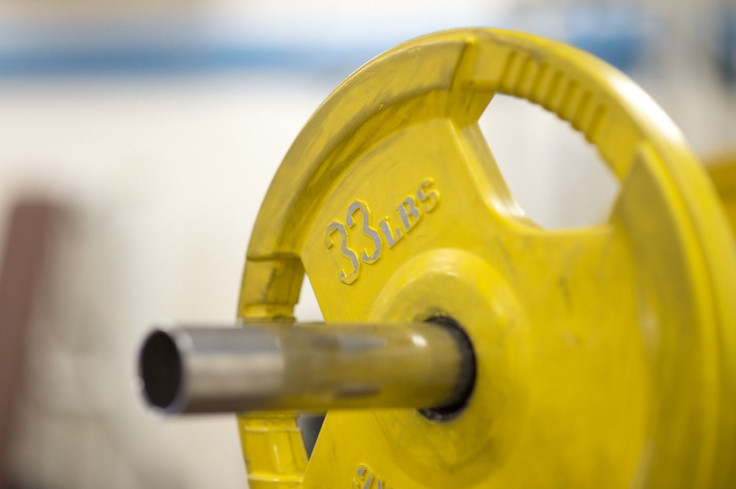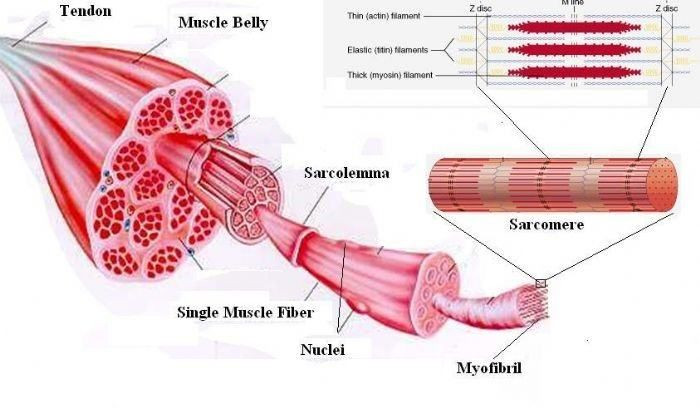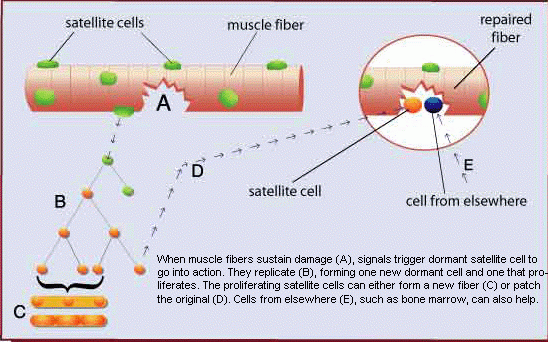What Changes When Someone Gets Fit?


This question originally appeared on Quora. Answer by Bart Loews, lifelong swimmer, avid runner, yoga practitioner, passionate exercise enthusiast.
Your body adapts to the increased demands on in by a number of biological changes depending on the specific demands.
This is generally known as the SAID principal: Specific Adaptations to Increased Demands.
When you initially start any sort of fitness routine, your muscles will grow to adapt to that training. I’ll cover that more below in the resistance training section. When you run, your leg muscles will grow a little bit to adapt to the new stresses you’re putting on them. When you swim, your upper body will adapt.
These changes will slow down as you continue training and will stop unless you apply more demands for your body to adapt to — more intensity, more duration (reps, distance), or both.
Movement in general will tell your body to maintain your joints. Studies have shown that runners have slightly lower rates of arthritis showing that activity doesn’t always cause it (though injuries can lead to an elevated risk of arthritis).
A word on fat and weight
Adipocytes are “fat cells” used to store energy for long term.
Your body has a set number of these cells, that grow into adult hood. The average adult has about 20 billion of these cells. About 8 percent of them die off and are replaced yearly. Children who are overweight through their formative years can have as many as 20% more when they are adults.
In any case, fat is stored energy in the form of triglycerides. When a person is overweight or obese, they don’t necessarily have more fat cells, they just have more energy stored in their fat cells. Triglycerides are smaller than glucose and store two times as much energy as glucose. Your body uses fat constantly while at rest to power itself because it’s a dense source of energy; the adipose tissue itself isn’t dense, but the fat stores a lot of energy. And when you’re at rest, while it is a deeper process to turn triglycerides into ATP, you don’t need the energy as quickly.
When you “lose fat,” you’re not actually killing off fat cells — you’re just using and reallocating the energy stored in the fat cells. Your body carefully regulates it’s blood sugar levels, so it will request more fat to be released if it gets low. Your body also has glycogen stores, stored glucose, in your liver and muscles. If these get low, it will request fat to be turned into glucose.
Additionally, when you start performing activities, your body will rely on your glycogen stores initially to power your muscles. When you deplete glycogen stores (not fully, your body will always keep some for your liver to work and muscles), you rely more and more on your fat stores. [At this point] it will feel like you’re “hitting a wall” because it’s a longer process to get this energy. You can burn your fat directly by exercising for longer periods of time, but for the most part this is unnecessary and actually less efficient than performing shorter cardio sessions (30–60 minutes) and weight lifting.
Let’s get into specific adaptations to two different training paradigms, aerobic or cardiovascular training and resistance training.
Aerobic training
Aerobic training is any form of training that targets your oxidative energy systems (Aerobic glycolysis, aerobic lipolysis) through endurance exercise.
Your oxidative energy systems create ATP and sugars through reactions involving oxygen.
You use your oxidative energy system by default throughout the day. Most of your energy at rest (and fasted) comes from fat which is oxidized to sugar which is then oxidized to ATP, which is used as energy.
When you place increased demands on your body by, say, running, your body needs energy faster than it does during rest. Your heart rate increases to circulate more oxygen, and you start breathing heavier to get more oxygen. Most of the adaptations to aerobic exercise revolves around these two processes:
- Your heart becomes stronger and more efficient, it requires fewer pumps to circulate blood through your body
- Your lungs develop more alveoli (the little air sacs that transfer air to blood) to give more bandwidth to get blood into your system
- Less mucus in the lungs. The air rushes associated with aerobic exercise will facilitate the clearing of mucus. Less mucus is associated with lower mortality, it will also prevent pneumonia.
- Your blood vessels become stronger to handle the added flow
- Your cells develop more capillaries to better facilitate oxygen transfer
- Your body produces more red blood cells to transport more oxygen
- More efficiency at the point of exchange due to improved gradient of gas between blood and tissues
- Increased mitochondrial content in the muscles to better facilitate the creation of ATP
Your brain also receives more blood flow and adapts positively to it.
- Your brain will also have increased capillary density and blood volume, giving you improved cognitive and learning skills as well as improved future performance of the central nervous system in that particular athletic activity.
- Your Hippocampus will also increase in size, leading to improved stress and memory management. There is on going research into using aerobic exercise as a treatment for Parkinson's, Alzheimers, as well as depression.
When you’re aerobically “fit,” your body becomes very efficient at creating and using energy for what you’ve trained for.
Resistance training
Resistance training is performing movements against a significant amount of resistance.
Resistance training can be calisthenics, weight lifting, sprinting, [and so on]. Anything that makes your body perform intense movements generally over 20 percent of your one repetition maximum, though you can build muscle with less.
The goal of resistance training is two fold (usually):
- To become stronger
- To build muscle
Both of these do happen with most forms of resistance training, though some methods will build one over the other.
Let's look at what muscle is.

Skeletal muscle is a series of fibers made up of millions of strings of proteins called myosin and actin. When you move, your brain sends signals down your nerves. When it's time to do work, the myosin grabs the actin and pulls it in to the middle of the myosin chain. With all the myosin working together, the entire muscle will contract. When the antagonist muscle contracts, the other muscle is trained to release accordingly (when you flex your biceps, your triceps have to release).
Why does that make us grow? Your muscle fibers have yet another cool attribute — myosatellite cells (or simply satellite cells, different tissues also have satellite cells, as well, like nerves). When your muscle is damaged, satellite cells are triggered and begin to replicate to patch the damaged fibers and create new ones.

How this happens exactly depends on the individual, but generally, hormones trigger the growth: Insulin-like growth factor (IGF-1), Insulin, Testosterone, and Human Growth Hormone (HGH or simply GH, human is understood). When you lift weights, the microtears that happen to your muscles trigger the hormone response which tells your satellite cells to grow, grow, grow! Exercise, generally, has been demonstrated to not only cause your satellite cells to jump into action, but to also create a larger number dormant satellite cells in the aftermath.
All exercise, both resistance and aerobic exercise causes these growth hormone release and satellite cells. That's what's happening on the deep cellular level. [So,] how does that make me stronger?
When your satellite cells rebuild the damage you've done, it'll also build in new adaptations:
- Muscle fiber density increase to allow you to lift more (It's generally believed you don't actually get new fibers, they just get bigger)
- Increased fluid in the muscle cells
- Increased capillary density to allow for more efficient nutrient and waste exchange
- Increased central nervous system response — your body learns to recruit more muscle fibers to perform the same tasks. This is the most important thing that happens in the first few months of training, explaining why you can increase the weight you lift quickly at first.
- Bone density increase — by putting loads on your bones it tells them they need to be able to take that load more in the future.
- Decreased resting heart rate and blood pressure due to thickening and strengthening of the left ventricle of your heart — Your heart becomes more efficient at moving blood through your body, so it doesn't have to work as hard.
- Reduced serum cholesterol levels — the exact mechanism of how this happens needs more investigation, but some studies have indicated that exercise can lower your LDL and free fatty acid levels.
- Increased insulin sensitivity and glucose metabolism, especially in heavy lifting training. Your body becomes better at getting energy to your cells, at least for a period of time after lifting.
As a side note, the "pump" you feel when you lift is due to increased fluid in your muscles as your body delivers more nutrients quickly to your muscles, additionally, as your muscles expand, it can block off some of your veins to a degree. This effect wears off usually a few hours after your lift, it is hypothesized that it can be helpful in the development in sarcoplamic hypertrophy (more fluid in muscle cells) and is the inspiration for Occlusion Training (where you block off the blood return flow to a limb and lift light weight to encourage strength gain. Of course the concept of sarcoplasmic hypertrophy versus myofibral hypertrophy isn’t proven…they both happen, but it’s not clear if they happen independently of one another.
More from Quora:



























